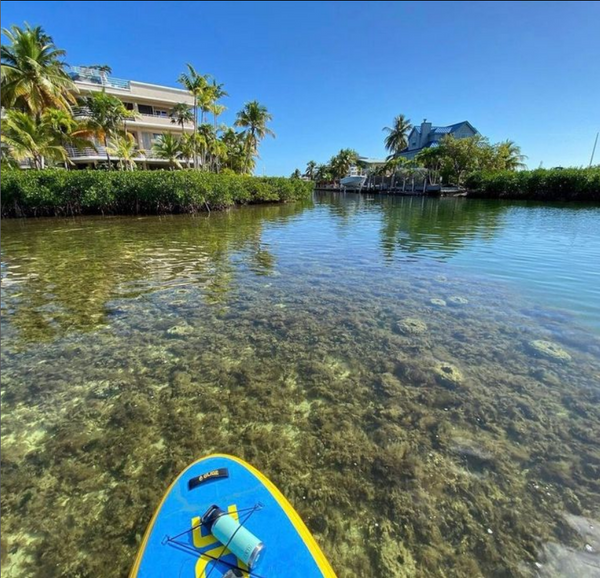
Can You SUP in Shallow Water?
Paddleboarding in shallow waters is not only possible but also opens up a unique avenue to explore serene and inaccessible places. However, navigating your SUP (Stand Up Paddleboard) in shallower waters does present its own set of challenges. The closer proximity to the underwater world requires a blend of skill, balance, and heightened awareness to prevent any mishaps.
Key Highlights
- Understanding the Challenges: Be vigilant of underwater hazards like rocks and logs that can snag your fin, emphasizing the need for skill and awareness in shallow waters.
- Navigating Shallow Waters: Offers a tranquil connection with nature but requires cautious navigation due to underwater obstacles and changes in depth, especially in murky or deceptively clear waters.
- Wind and Current Considerations: Wind can complicate control in shallow waters, pushing you towards obstacles or affecting your paddling direction. Awareness of tides and currents is crucial for a safe experience.
- Safety Measures: Always prioritize safety by wearing a personal flotation device (PFD), using a leash, and opting for suitable attire. Paddling with others adds a layer of security.
- Embrace the Adventure: Despite potential challenges, shallow waters provide a rewarding and unique paddleboarding experience, allowing access to hidden natural beauties beyond the reach of larger watercraft.
Understanding the Challenges
The thrill of gliding over shallow waters comes with the caveat of being vigilant. Your paddleboard might effortlessly cruise over a submerged log or a rock, but if your fin snags on an obstacle, it could abruptly end your journey with an unplanned dip. This underscores the importance of knowing the depth and being mindful of your fin's length to avoid getting caught on rocks, sandbars, or other hidden hazards beneath the surface.
Stand-up paddleboarding is a fun way to discover new areas, even those with shallow water.

Navigating Shallow Waters
Exploring shallow waters on a SUP offers a tranquil experience, allowing you to connect with nature and enjoy a rewarding workout. Yet, it's crucial for beginners to recognize the potential risks involved. Underwater obstacles, varying water clarity, and changes in depth pose significant challenges. Murky waters increase the risk of collisions, while clear waters can be deceiving, making objects appear closer than they actually are. Hence, a vigilant eye and cautious navigation are essential.

Wind and Current Considerations
Wind plays a notable role in shallow water paddling. With limited space for wind dissipation, controlling your board can become more complex, especially under windy conditions. The wind can easily push you toward unwanted directions, increasing the likelihood of encountering obstacles or damaging your fin. Awareness of tides and currents is equally important, as their unpredictable nature in shallow waters can impact your paddling experience. Wind is the natural enemy of the SUP, so just be very careful when you are paddling in shallow water and there is wind.
Safety Measures
Safety should always be your top priority. Wearing suitable protective gear, such as a personal flotation device (PFD), a leash, and appropriate attire for the conditions, is non-negotiable. Additionally, paddling with others not only enhances the experience but also adds a layer of safety, ensuring that help is within reach if needed.
Embrace the Adventure
Despite the challenges, shallow waters offer a unique paddling experience. With careful preparation and awareness of the surroundings, paddleboarding in shallow waters can be incredibly rewarding. It allows access to areas beyond the reach of boats and kayaks, unveiling the hidden beauty of the aquatic world. So, arm yourself with a bit of common sense and dive into the exploration of shallow waters, where adventure awaits at every paddle stroke.

